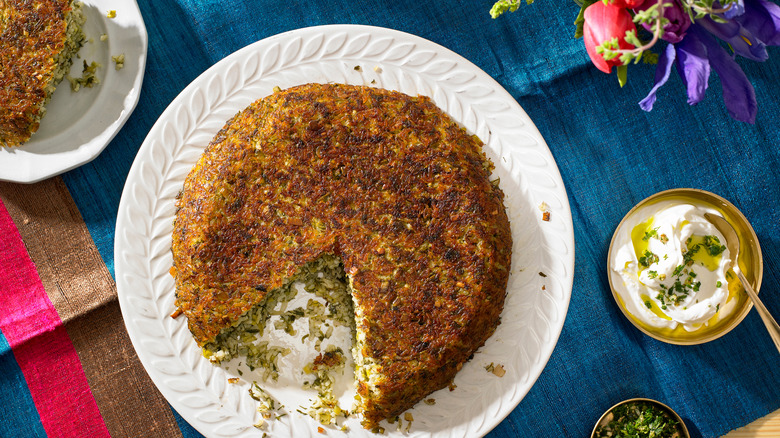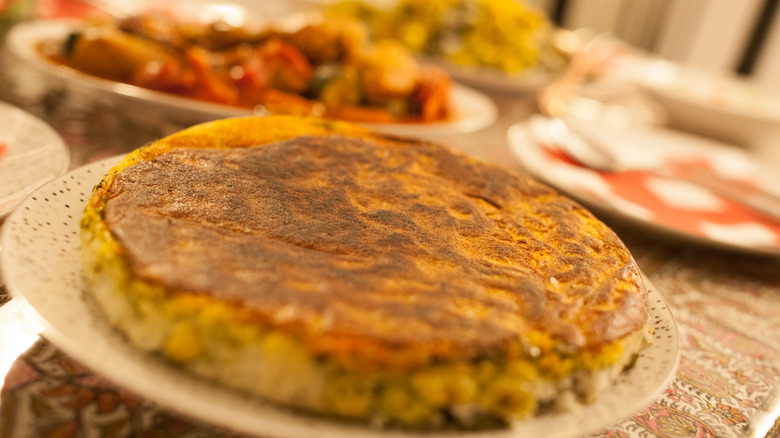The Crispy Tip For Using Pita Bread For Delicious Tahdig
Pita is a flatbread used in Mediterranean and Middle Eastern culinary cultures to scoop up sauces and dips or house meats and veggies in their convenient pockets. However, there are plenty of creative ways to use pita — from personal-sized pizza bases to salad bowls. You can bring their utility full circle by incorporating pita into another longstanding Middle Eastern staple: tahdig. Meaning "bottom of the pot" in Farsi, tahdig is an Iranian rice dish with a scorched, fried bottom.
While some recipes scorch the rice itself to create that delicious crispy layer, other recipes call for potatoes, veggies, or bread. In fact, some recipes even recommend a flour tortilla for its symmetrical round shape that perfectly covers the bottom of a deep frying pan. Pita is kind of like a thick flour tortilla, and considering the ease with which it will fry into crispy chips, you know it will make a wonderfully crunchy tahdig topper.
To incorporate pita into tahdig, you'll place a whole round in piping hot oil after heating it over medium heat. Fry the pita for 30 seconds before flipping it with tongs or chopsticks to fry for another 30 seconds. You can then place parboiled rice on top, ensuring to make various openings with your spatula or spoon handle. These spaced pockets will let steam escape as the rice cooks, maintaining that crunchy pita bottom.
More tips for crispy pita tahdig
Pita comes in numerous varieties depending on the culinary tradition. In Greece, pita is thicker, softer, and fluffier than the thinner, chewier Middle Eastern pita. Furthermore, Middle Eastern pita tends to have a pocket, whereas Greek pita does not. If you're using Middle Eastern pita, create two thin rounds by cutting the pita at the seam of its pocket to achieve the crispiest tahdig. You can also take a serrated knife to Greek pita, cutting it into two, thinner rounds, but Middle Eastern pita is easier to crisp because of its chewier, tighter crumb.
Another important step to take for a crispy pita tahdig is to wrap the cooking pot top in a cloth towel before steaming the parboiled rice. The cloth will absorb the wet steam, thereby ensuring fluffy, separate rice and a crunchy pita. The crunchy pita goes from the bottom of the pan to the top of the rice dish in a single, decisive flip of the cooking pan. If the pita cracks or breaks during the flip, it'll just make it easier to portion and serve the rice. Since the rice will continue to emit steam even after you flip it into the serving dish, you'll want to eat the tahdig as soon as it's done. Otherwise, the residual steam will infiltrate the topping as it rises, resulting in a rehydrated pita that's lost its crunch.

